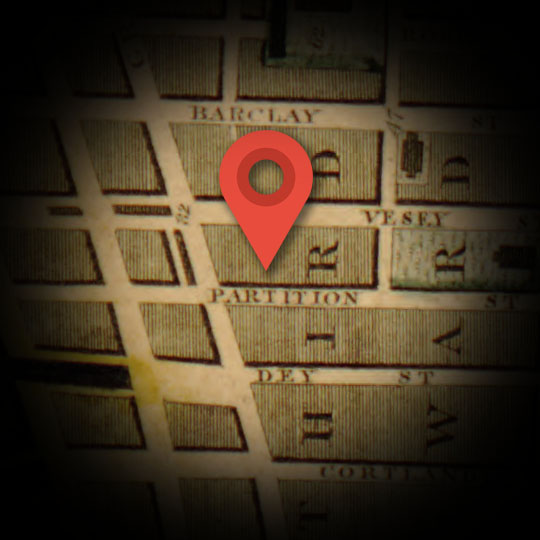58 PARTITION ST.
Explore
58 Partition Street was one of the Hamiltons’ many fairly short-term residences they inhabited during their second New York Period, beginning in 1795.
Very few details about the building or what the living spaces specifically looked like remain in the historical record. Hamilton’s grandson, Allan McLane Hamilton, attested the family lived at 58 Partition Street from 1797-1799. However, other primary sources indicate that Alexander Hamilton retained the lease on this home as late as the fall of 1802, when Elizabeth Hamilton and the children were also occupying their country house, The Grange, far uptown in Harlem.
Hamilton was on his way to Albany in October, 1802, when he wrote his wife with suggestions on how she deal with moist soil in The Grange’s orchard. Thomas Jefferson and George Washington’s personal correspondence are both full of agricultural and architectural concerns and orders. We can guess that Hamilton must have felt he was really coming into his own as an elite landowner when writing upon such topics as this.
It would have made sense for Hamilton, if he could afford it, to keep a downtown home as well as a country seat. Such was the practice of those known as “gentlemen,” and the arrangement would have made it more convenient for Hamilton to attend to business in the built-up section of the city, near clients and court offices.
Partition Street was in Lower Manhattan, on the West Side. It began at St. Paul’s Church on Broadway and extended west to the Hudson River.
Partition Street ended in an open-air collection of fruit, vegetable, fish, and meat stalls that in Hamilton’s time was called Bear Market, on account of the first kind of meat that was offered for sale there. It later became Washington Market, The market began officially in 1771 and existed well into the 20th Century, becoming a major hub of produce distribution and trade for the whole of the nation.
Partition Street and Fair Street—on the other side of Broadway—were rechristened Fulton Street in 1816 to honor Robert Fulton, the American artist and inventor of the steamboat. This technology quickly helped propel not just the U.S. but the whole developed world further into the industrialized age.
Pictured here is Washington Market from 1859, the best available pictorial illustration of the neighborhood around 58 Partition Street. Direct your attention to the upper right for a glimpse of residential and commercial buildings east of the market, towards Broadway.
58 Partition Street would have been immediately north of the World Trade Center towers, destroyed on September, 11, 2001, by terrorists who had seized control of commercial airliners.

TIME FRAME:
1779-1802
